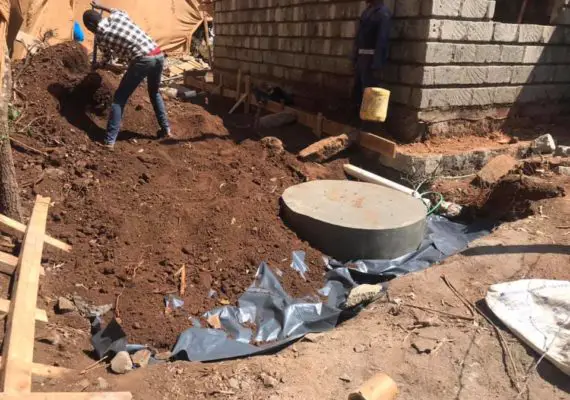What Is An Onsite Sewage Facilities (OSSF)?
What Is An Onsite Sewage Facilities (OSSF)?
Onsite sewage facilities, also known as septic systems, are a type of wastewater treatment system that is designed to treat and dispose of effluent on the same property that produces the wastewater, in areas where there is no public sewage infrastructure.
These systems are common in the Western world and account for around 25% of all domestic wastewater treatment in the United States. There are different types of onsite sewage facilities, such as septic tank and drainfield combinations, small-scale aerobic and biofilter units, membrane bioreactors, and sequencing batch reactors.
These are often referred to as “package plants” and are similar to municipal sewage treatment plants, but on a smaller scale. The primary mechanism of sewage treatment in onsite sewage facilities is recycling and decomposition by natural organisms such as animals, insects, soil microorganisms, plants, and fungi.
These organisms consume all available nutrients in the waste, leaving behind fully decomposed solids that become part of topsoil, and pure drinking water that has been stripped of everything that can possibly be consumed and utilized.
This natural biological purification process requires time and space to process the wastes. To ensure that these organisms have enough time to decompose the waste, onsite sewage facilities establish minimum sewage retention and settling times and minimum liquid flow distances between sewage disposal sites and surface water or water wells.
Animals such as mice, rats, flies, and parasites play a natural role in the recycling of biological waste. However, engineered waste management facilities, such as sewage treatment plants, often try to exclude these animals in order to prevent population explosions, infestations, and the spread of disease. One example of this is the use of onsite sewage facilities, which collect solids that can potentially be used as compost to build topsoil.
However, these solids are often incompletely decomposed due to a lack of storage space or stacking in a layered structure, resulting in a product known as sludge with strong odors from the microorganisms consuming nutrients in the waste.
Engineered facilities that use water suspension to transport solids also have a floating layer of low-density liquids, buoyant solids, and soap foam, referred to as scum, which is slowly decomposed by microorganisms and eventually falls to the bottom of the settling tank as part of the sludge.
This incompletely digested waste can be turned into low-odor compost if left undisturbed in the open air. However, municipal facilities may be required to bury the collected solids in landfills due to the risk of toxic contaminants placed into the shared communal sewage system.
Additionally, municipal facilities may also collect runoff from roadways which contains various chemicals used in vehicles and melting ice and snow. Private septic systems typically do not experience these issues as the homeowner is aware of the potential harm caused by toxic chemicals.
Solutions such as building two tanks side by side, diverting sewage between them, and cleaning out the resting tank by hand before it is used again have been proposed for onsite sewage facilities in subsistence agriculture economies where hand labor is abundant.
Performance Requirements
In recent years, the onsite wastewater treatment system (OWTS) industry has made significant strides in improving treatment methods through the implementation of performance requirements.
Conventional systems, which typically consist of a septic tank and a subsurface wastewater infiltration system (SWIS), have been updated with new technologies to meet the demands of site limitations and stricter performance standards.
The development of these new technologies is based on a comprehensive approach that includes defining performance requirements, analyzing wastewater flow and pollutant loads, evaluating site conditions, and selecting a system design that addresses these factors.
Performance requirements can take the form of numeric or narrative criteria, and are based on the assimilative capacity of regional ground water or surface waters, water quality objectives, and public health goals.
Wastewater flow and pollutant content are used to define system design and size, and can be estimated by comparing the size and type of facility with measured effluent outputs from similar, existing facilities. Site evaluations integrate detailed analyses of regional hydrology, geology, and water resources with site-specific characterization of soils, slopes, structures, property lines, and other site features to further define system design requirements and determine the physical placement of system components.
Alternative treatment technologies applied today typically treat wastes after they exit the septic tank. The tank retains settleable solids, grease, and oils and provides an environment for partial digestion of settled organic wastes.
Post-tank treatment can include aerobic or anaerobic biological treatment in suspended or fixed-film reactors, physical/chemical treatment, soil infiltration, fixed-media filtration, and/or disinfection.
The application and sizing of treatment units based on these technologies are defined by performance requirements, wastewater characteristics, and site conditions. Overall, the OWTS industry has made significant progress in improving treatment methods through the implementation of performance requirements.
By defining performance requirements, analyzing wastewater flow and pollutant loads, evaluating site conditions, and selecting a system design that addresses these factors, the industry has developed new technologies that can achieve high performance levels on sites with size, soil, ground water, and landscape limitations that might preclude installing conventional systems.
![Advantages of Biodigester + How Biodigester Works [A Simple Guide]](https://www.hpdconsult.com/wp-content/uploads/2019/06/maxresdefault-1-570x400.jpg)
